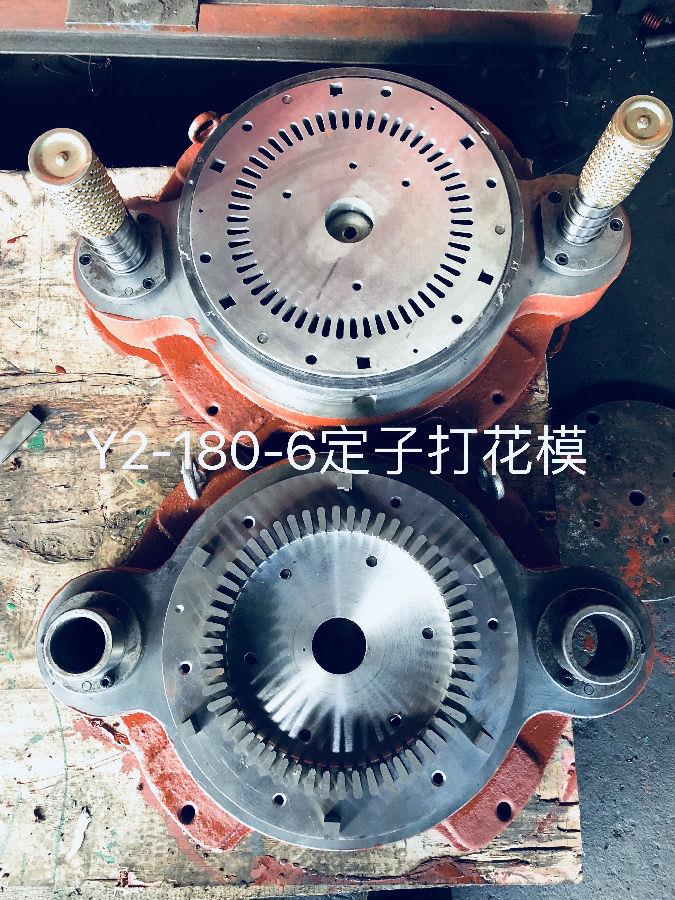I. Composition and name of self-service die
The mold is generally composed of a mold base, an upper mold, a lower mold, a fixed plate, an upper and a lower pad plate, a discharging material, and a supporting material.
Second, check before the mold on the machine
1. According to the punching and shearing force of the mold, correctly use a machine tool with sufficient tonnage (the tonnage of the general machine tool must be greater than the punching and shearing force required by the mold).
2. Before the mold is put on the machine, it is necessary to check and adjust the gap of the punching scissors mouth of the mold to prevent the knife edge gap from being distorted when the mold is being loaded and unloaded during transportation.
3. The press-fitting table of the machine tool must be parallel to the bottom surface of the slide, and the parallelism deviation should be less than 0.03.
4. When the mold is loaded, first install the mold, manually close the mold several times on the punch, close the knife edge to press the lower mold, and adjust the upper and lower strokes.
5. After punching out the sample sheet, you must immediately check whether it conforms to the standard dimensions of the product.
Matters needing attention in the application of self-service die
1. When the mold is used, the guide post and guide sleeve should be regularly lubricated.
2. Within 90 minutes of the start of the mold, the knife edge should be repeatedly lubricated or punched with shear oil, and the number of refueling can be reduced after 90 minutes (also refer to the process after grinding the knife edge)
3. When punching and shearing products, the edge of the sheet must be 0.6mm-1.2mm to prevent rubbing.
4. Double-sheet punching and cutting is prohibited. Laminated sheets and seeds should be avoided. Except for punching and shearing materials and lubricating oil, other items should be kept away from the knife edge area.
5, the holding force (rubber) can not be too tight, just can pull out the product.
In the mouth of 6 knives, iron powder cannot stay too much. When it is found that there is too much retained material, the rubber on the support and discharge should be removed, and the gasoline should be injected for cleaning, and the operation should be continued after the support and discharge are sensitive.
7. When the mold is in service, the punch or needle appears degumming. It should be removed for cleaning, and then bonded with anaerobic adhesive.
Maintenance of self-service die
1. After the mold is in service, the knife edge must be sharpened. The knife should not be too much during grinding. Cooling water must be added to prevent the knife edge from annealing. It should be slowly and lightly ground and the knife edge can be cleaned.
2. After the mold is ground, the blade surface should be demagnetized, and it should not be magnetic. Otherwise, lamination is likely to occur.
3. After grinding, clean the iron powder in the mouth of the knife.
4. Check the tightness of fasteners, positioning parts, and standard parts, and then refuel for use.
5. When grinding the removable mold holder, remove one screw of the fixed guide post behind the lower mold base, and lightly tap the tapered guide post to sharpen the cutting edge. It is necessary to clean the guide post and the base when installing the guide post. Tighten the screws.

Previous: Characteristics of stator mold
Related News
- High-voltage motor punching die operation specification
- What are the components of a simple stamping blanking mold?
- Blanking die process and principle
- Using method of rotor casting aluminum mold
- Structural factors affecting composite molds
- Possible problems with rotor molds
- Characteristics of stator mold
- Tips for self-help die
- Introduction of blanking die
- Attentions in the design of fixed-rotor tooling fixtures
- Precautions for the use of stator embossing molds



